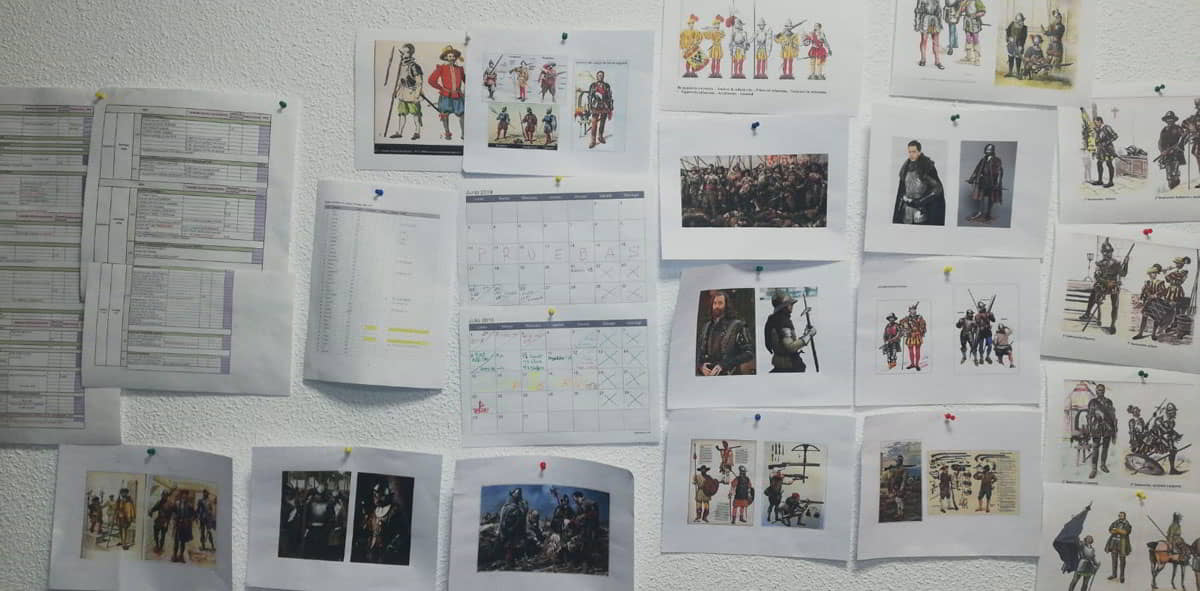[vc_row][vc_column][vc_column_text]The costumes are one of the most powerfull tools to express what the director wants to transmit, It transports us to a specific time, a social class and a specific character. It really introduces us to the world where the story happens.
It is not only the garments that make this effect, the accessories, the shoes, the jewelry, an infinity of details that all they do is that a production can be successful.
A specific wardrobe gives us drama, power, luxury or extreme poverty, they can tell everything that escapes from the dialogues. Especially if we are talking about a period fashion, in this case, the costumes would be 80% of the character.
Equally a relevant detail would also be the character’s process, which thanks to a certain outfit helps us to be able to see what is happening to him. As an example, we could put Isabel the Catholic from the Diagonal TV production company, represented by the actress Michelle Jenner.
The difference between the first and the last photo is abysmal, from the arrival to the throne until the death. We can see the evolution of Isabel, her maturity. Without words we could understand the era.[/vc_column_text][vc_row_inner][vc_column_inner width=”1/2″][vc_single_image image=”46648″ img_size=”full” alignment=”center”][/vc_column_inner][vc_column_inner width=”1/2″][vc_single_image image=”46647″ img_size=”full” alignment=”center”][/vc_column_inner][/vc_row_inner][vc_row_inner][vc_column_inner width=”1/2″][vc_single_image image=”46649″ img_size=”full” alignment=”center”][/vc_column_inner][vc_column_inner width=”1/2″][vc_single_image image=”46650″ img_size=”full” alignment=”center”][/vc_column_inner][/vc_row_inner][/vc_column][/vc_row][vc_row][vc_column][vc_column_text]Of course, we can’t talk about this serie without mentioning the wonderful costumes of the time (15th century)
What was fashion like in the days of Isabel the Catholic?
The french and flemish styles were very influential at the time. And therefore the gothic style, with an elongated silhouette.
Notable factors at the time would be how much fabric had been used to make each suit, the embroidery, the color and of course what type of fabric it was. All of this helps us communicate social status, lineage, or marital status.
As we were speaking, according to social class, one garment or another was acquired, just as it happened with accessories. Red, green, or purple dresses were exclusively for the wealthy and royalty. The color black was only for the wealthiest and the poorest wore brown colors. This was because dyeing increased the cost of the fabric.
We can highlight several peculiar garments at the time, the peculiarity especially in their names.
The “executioner” was the first Spanish can-can, it was the key to creating other frames throughout history that were essential to hollow out skirts.
It is worth highlighting the “albanadega”, so called at the time, the net that covered the heads of women. When they were young, they wore the white canvas net that allowed their hair to be seen, but once they got older, they were pleated, thus covering the hair and even the forehead. Its use at this time was more decorative than practical.
The most prominent sleeves of the time were the silly sleeve, which did not fit the arm and had no cuff, and the missing sleeve that hung down the back of the arm.
A doublet was a garment fitted from the shoulders to the waist.
Among others, there was the brial, named after a silk dress for women. Cloaks with a tail (worn by ladies at court). Papahígo, cap that covers head and neck, leaving eyes and nose free. And the randa, so called lace to adorn dresses and other clothing.
[/vc_column_text][vc_row_inner][vc_column_inner width=”1/3″][vc_single_image image=”46652″ img_size=”full” alignment=”center”][/vc_column_inner][vc_column_inner width=”1/3″][vc_single_image image=”46651″ img_size=”full” alignment=”center”][/vc_column_inner][vc_column_inner width=”1/3″][vc_single_image image=”46653″ img_size=”full” alignment=”center”][/vc_column_inner][/vc_row_inner][vc_column_text]You can see more in the stock selection section: https://periscostumes.com/seleccion-stock/siglo-xvi-xvii/[/vc_column_text][/vc_column][/vc_row][vc_row][vc_column][vc_column_text]How to forget about the incredible jewels of this time, made of gold, silver and precious stones. Many times they had to pawn them to leave them as collateral for loans, but once they could be recovered, in good times, they modified them by adding more precious stones.
And the importance of Catholic symbols like crosses.[/vc_column_text][vc_row_inner][vc_column_inner width=”1/3″][vc_single_image image=”46654″ img_size=”full” alignment=”center”][/vc_column_inner][vc_column_inner width=”1/3″][vc_single_image image=”46655″ img_size=”full” alignment=”center”][/vc_column_inner][vc_column_inner width=”1/3″][vc_single_image image=”46656″ img_size=”full” alignment=”center”][/vc_column_inner][/vc_row_inner][vc_column_text]You can see more jewelry on our website or Pinterest:
https://jewellery-rental.com/category/renaissance-baroque/
https://jewellery-rental.com/category/religious/ecclesiastic-crosses/
https://www.pinterest.es/periscostumesco/_created/[/vc_column_text][/vc_column][/vc_row][vc_row][vc_column][vc_column_text]Another great example of the importance of the wardrobe could be Inés del alma mía produced by RTVE, Boomerang TV y Chilevisión with Elena Rivera and Eduardo Noriega as protagonists.[/vc_column_text][vc_row_inner][vc_column_inner][vc_single_image image=”46657″ img_size=”full” alignment=”center”][/vc_column_inner][/vc_row_inner][vc_column_text]Moodboard by Loles García Galean (costume designer) in the Peris Costumes box.[/vc_column_text][/vc_column][/vc_row][vc_row][vc_column][vc_column_text]The wardrobe of this production based on the 16th century, where the garments called “doublet” are still used, for woman or man, the latter only differentiated by the peak extension from the waist.
And of course, the armor is very important, to protect them against the attacks that they could suffer with swords or other weapons.[/vc_column_text][vc_row_inner][vc_column_inner width=”1/2″][vc_single_image image=”46658″ img_size=”full” alignment=”center”][/vc_column_inner][vc_column_inner width=”1/2″][vc_single_image image=”46660″ img_size=”full” alignment=”center”][/vc_column_inner][/vc_row_inner][vc_row_inner][vc_column_inner width=”1/2″][vc_single_image image=”46661″ img_size=”full” alignment=”center”][/vc_column_inner][vc_column_inner width=”1/2″][vc_single_image image=”46659″ img_size=”full” alignment=”center”][/vc_column_inner][/vc_row_inner][/vc_column][/vc_row][vc_row][vc_column][vc_column_text]As a curiosity, the brooches of the “Mapuche Indians“, called topus are original from Chile. And the wonderful headdresses they wear are handcrafted by the Loles team.[/vc_column_text][vc_row_inner][vc_column_inner width=”1/2″][vc_single_image image=”46663″ img_size=”full” alignment=”center”][/vc_column_inner][vc_column_inner width=”1/2″][vc_single_image image=”46665″ img_size=”full” alignment=”center”][/vc_column_inner][/vc_row_inner][vc_row_inner][vc_column_inner width=”1/2″][vc_single_image image=”46664″ img_size=”full” alignment=”center”][/vc_column_inner][vc_column_inner width=”1/2″][vc_single_image image=”46662″ img_size=”full” alignment=”center”][/vc_column_inner][/vc_row_inner][/vc_column][/vc_row][vc_row][vc_column][vc_column_text]The little details make the difference, but what about this wonderment?[/vc_column_text][vc_row_inner][vc_column_inner width=”2/3″][vc_single_image image=”46666″ img_size=”full” alignment=”center”][/vc_column_inner][vc_column_inner width=”1/3″][vc_single_image image=”46667″ img_size=”full” alignment=”center”][/vc_column_inner][/vc_row_inner][/vc_column][/vc_row][vc_row][vc_column][vc_column_text]Finally, the women’s wardrobe, without much difference from the previous century. Giving great importance to the headdresses, and the sleeves.[/vc_column_text][vc_row_inner][vc_column_inner][vc_single_image image=”46669″ img_size=”full” alignment=”center”][/vc_column_inner][/vc_row_inner][vc_column_text]Has anyone had doubts about the capacity of the costumes in a production? If the answer is yes, imagine Lord Bridgerton dressed in a T-shirt and jeans[/vc_column_text][/vc_column][/vc_row]


